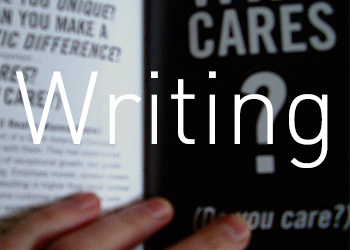Fit
Tom Peters
Time magazine recently featured Walmart, in honor of the upstart surpassing venerable Sears in retail sales ($33 billion vs. $32.6 billion in 1990). I was struck by two sets of physical descriptions: Sears’ “spacious, peach-carpeted 68th-floor boardroom” and 110-story tower, “a monument to the company’s glorious (past)”—and Walmart’s “drab, two-story building (with) Formica desks and battleship-gray walls” and founder Sam Walton’s “spartan little office.”
Sears failed in its recent attempt to mimic Walmart’s “everyday low prices” strategy. There were obvious reasons for the failure, including stratospheric overhead costs compared to Walmart. But I kept returning to the tower and the boardroom: If everything else were equal, could you really “live” a fast-paced, bare-bones, discount strategy in such lush, ponderous surroundings? I think not.
Consultant Tony Athos is one of our premier organizational thinkers: His favorite word is “fit.” Organizations that work, he argues, must have a high degree of syncopation. Walmart is a master of fit. The retailer’s information systems define state of the art. Yet Walmart’s top execs spend two to four days each week wandering the stores. The fit: They can afford to be away from the office because the information systems are so useful, timely and reliable; the high-touch perfectly complements the high-tech, giving leadership a matchless “feel” for the gyrating marketplace.
Moreover, that headquarters spartanism sends a clear message to store employees and vendors: Walmart is a responsive, no-nonsense discounter, putting its bucks into operations instead of corporate trappings. But, mostly, if you eat and breathe spartan, you more or less can’t help but act spartan.
Likewise, I recently spent an enchanting day at David Kelley Design in Palo Alto, Calif. The renowned product-design firm emphasizes mastery of the creative process per se and blends aesthetic, manufacturing, technological and financial imperatives in its work. The company’s offices are the ultimate candy store for design-technology-creativity buffs: Models of this, that and the other contribute to an energetic clutter. State-of-the-art computer technology sits comfortably next to crude balsa models. Client products in various stages of completion, and personal projects, are mixed in a lively jumble. Special-effects models for movies lie beside sophisticated blood analyzers. Everything seems to feed off everything else—another key element of the firm’s success.
The fit, then, is extraordinary. You readily “see” why founder David Kelley and his colleagues mix so well with the creative Next Computer founder (and Apple co-founder) Steve Jobs. Each detail, starting with a space-age elevator-control mechanism, is consistent with the David Kelley Design vision and strategy. But that’s wrong. It’s not that the kinetic clutter elevator controls, etc., are “consistent with” strategy—these things are the strategy, even more than the firm’s procedures manual which details its product-design philosophy.
Kimon Nicolaides’ The Natural Way to Draw, called the “best how-to book … on any subject” by one prominent reviewer, is all about fit on the highest plane. Nicolaides urges you to forget the abstract idea of “drawing something,” and to get in direct touch with the process. Ponder these instructions for one lesson: “Look at the edge of your chair. Then rub your finger against it many times, sometimes slowly and sometimes quickly. Compare the idea of the edge which the touch of your finger gives with the idea you had from merely looking at it. … Sit close to the … object which you intend to draw and lean forward in your chair. … Place the point of your pencil on the paper. Imagine that your pencil point is touching the model instead of the paper. Without taking your eyes off the model, wait until you are convinced that the pencil is touching that point on the model upon which your eyes are fastened.” That is, become one with what you’re drawing.
In a related vein, Los Angeles Times syndicated columnist Michael Schrage recently attacked computer spreadsheets. “Number-crunching with spreadsheets is like computationally pumping iron,” he wrote. “You bulk up on data but do virtually nothing for your conceptual quickness or flexibility.” In our uncertain world, he points out, “the issue … isn’t predicting the future; it’s embracing uncertainty in new ways.” Schrage suggests that most firms would be “better off hiring one good science fiction writer for a month than buying 1,000 spreadsheets.”
I agree with Schrage, except it won’t work where it’s needed most. I can readily picture a stellar science fiction writer participating in a “brainstormer” at David Kelley Design, or camped at a Formica desk at Walmart’s Bentonville, Ark. (pop. 11,000), “headquarters.” But I can’t for the life of me visualize that scrivener in the 68th-floor, peach-colored boardroom at Sears. She or he wouldn’t “fit.”
I’m not insisting that you trade in your mahogany for Formica. But I am suggesting that your real strategy—and the limits to shifting it—are most evident in decor, attire, clutter, and a thousand other cues that make a firm “tight” (rigid), “loose” (flexible), or something in between. If you’re considering change, first consider fit.
(C) 1991 TPG Communications.
All rights reserved.

